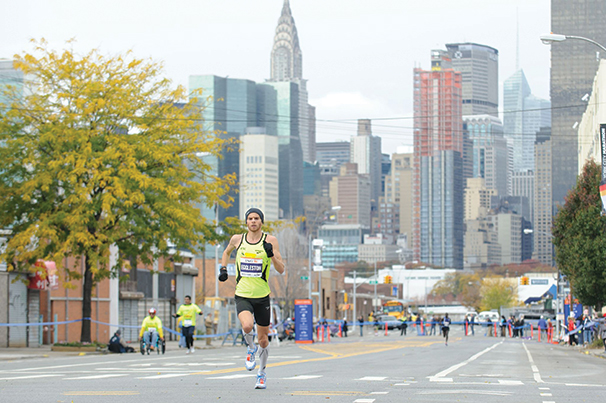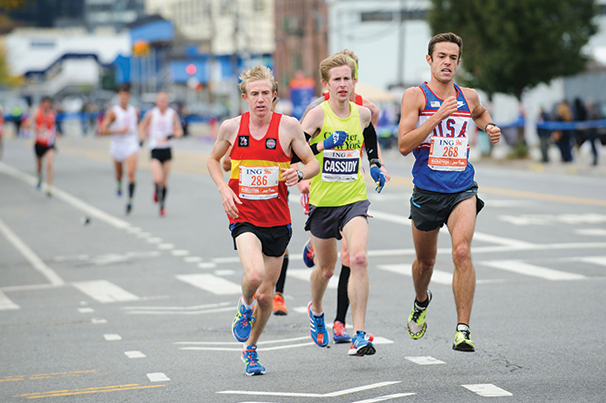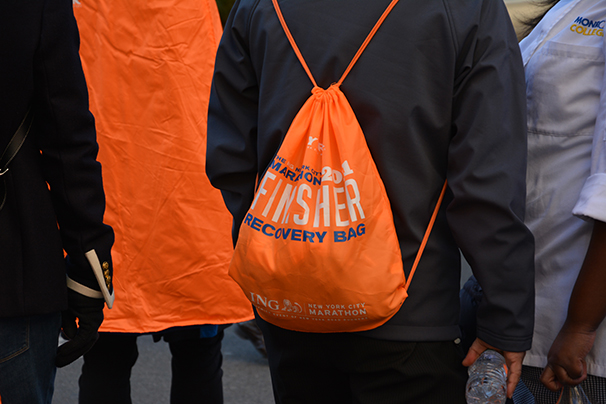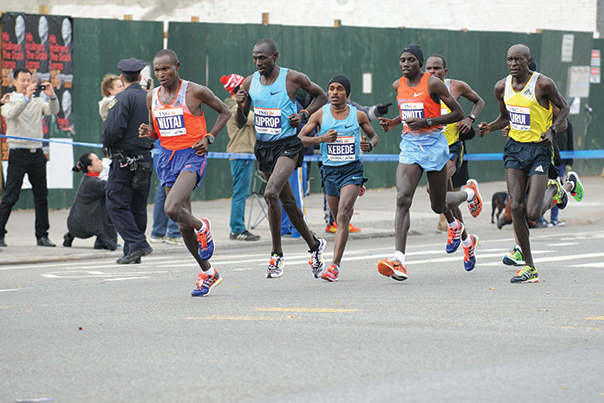
The New York Police Department sealed off part of Central Park West. Travelers exiting the northwest side of the Columbus Circle subway station were met by NYPD personnel and told to go back down the subway.
“It is making us detour right now because we were supposed to go in on [65th Street],” said Ninni Sahaola, a 27-year-old spectator. “We don’t really know where to go, [and] how to get in.”
These reactions occurred in response to the New York Road Runners, the organizers of the 2013 ING New York City Marathon, introducing new security measures at the race on Sunday, Sept. 3.
The new measures included required inspection of baggage for spectators in the Central Park grandstand, increased screenings at family reunion areas and no strollers or bags were allowed at certain venues — pets were not allowed at all.

NYRR worked with the NYPD and its federal, state and city agency partners to analyze the security for the marathon.
“[F]ollowing the Boston bombings, NYRR partnered with one of the world’s top security firms to conduct a top-to-bottom analysis of our existing security program,” an NYRR spokesperson Emily Gallagher said. “While the audit of our safety and security efforts prior to the 2013 race received high marks, we are strengthening our already comprehensive security plan in ways that the public will and won’t see in order to ensure the event is as safe as possible for runners, spectators and volunteers.”
A list of prohibited items for runners released by NYRR included backpacks, containers of liquid containing more than one liter, hydration backpacks, weight vests, suitcases, glass containers and bulky clothing.
An NYPD spokesman declined to comment on the security measures for the race.

LS professor Shaghayegh Harbi, who volunteered at the finish line with Achilles International, said despite the increased security there was a good showing of volunteers.
“Security was intense and well-organized,” Harbi said. “We were screened by the organizers before the event and issued ID badges. I was nervous at first, but felt very secure.”
This was the first New York City Marathon after the one in 2012 was canceled because of Hurricane Sandy.
First-year graduate student Manhee Nah attended the marathon two years ago as a spectator. This year, he volunteered at the marathon for his planning and development of major sporting events class midterm. He said in addition to required credentials this year, more police were present than two years ago, as well as police canines.
“I think there was a nervous vibe in the air,” Nah said. “The race itself was pretty unaffected, people came out in numbers and still cheered [for runners].”
Lisa Kennedy, 39, who was there to see her friends run in the marathon, said the new measures were a good precaution to take in light of the Boston Marathon bombings.
“[The precautions take] the anxiety out of it,” Kennedy said. “I feel safer.”

Daniel De Sola Marks, a senior at Brandeis University, ran part of the marathon with his 93-year-old grandfather, until his grandfather could no longer run and they both exited the race. De Sola Marks said the security checks did not affect their preparations for the marathon.
“There was definitely heightened security, with metal detectors and bag checks before entering the runners village,” De Sola Marks said. “Runners around me seemed to support the extra security measures because it made us feel more safe after the Boston tragedy.”
Class of 2013 graduate Celine Reyes was running a marathon for the first time and was not concerned about safety as much as other aspects of the race.
“I honestly wasn’t thinking too much about the security,” Reyes said. “I knew that they were being extra careful after the events at Boston. I was mainly focusing on finishing the race. I did once or twice think about the possibility of something happening, but again I was more focused on finishing the race.”
A version of this article appeared in the Monday, Nov. 4 print edition. Afeefa Tariq is a staff writer. Email her at [email protected].
























































































































































